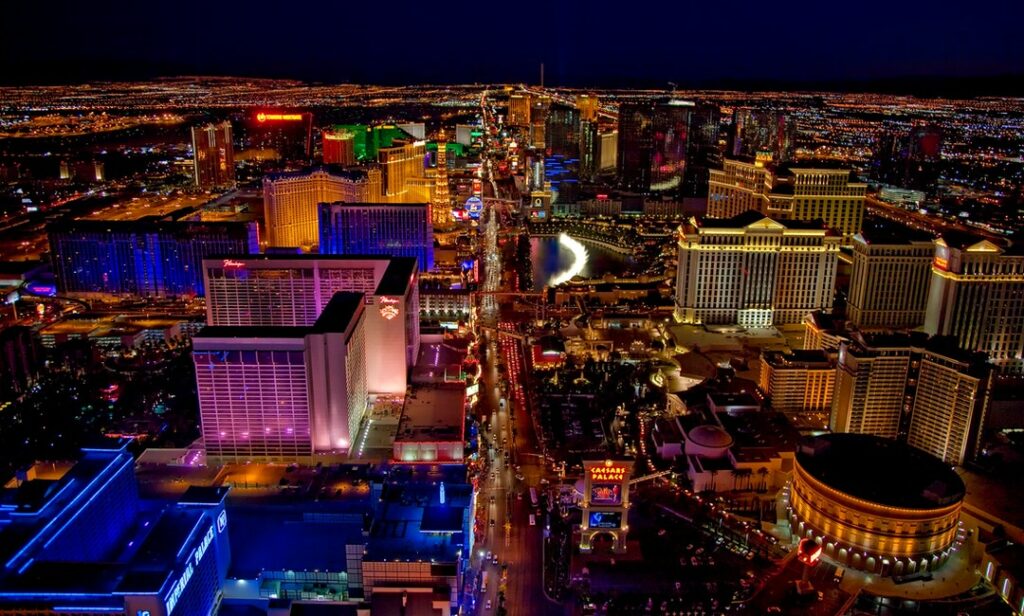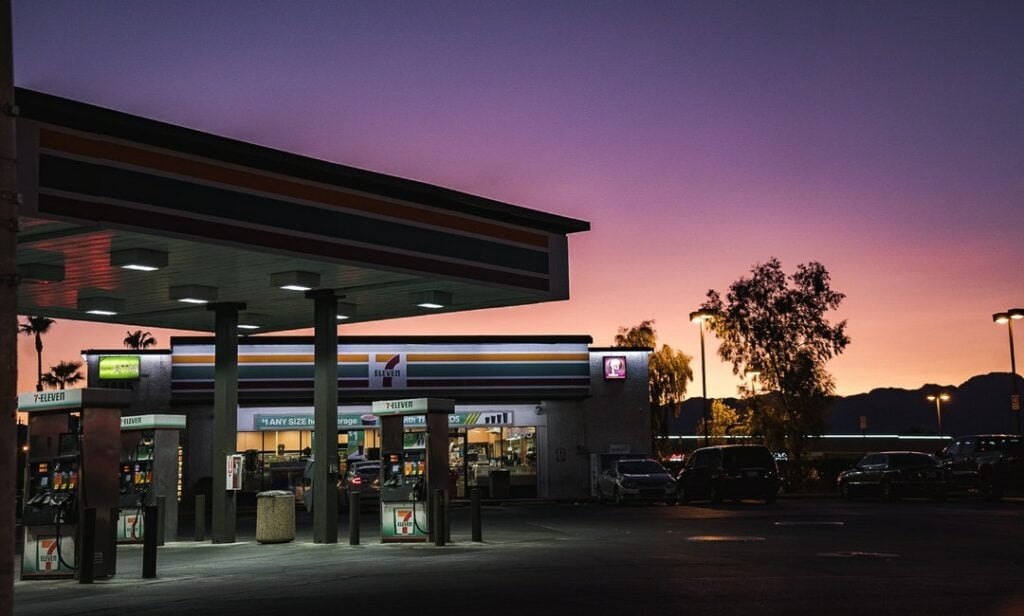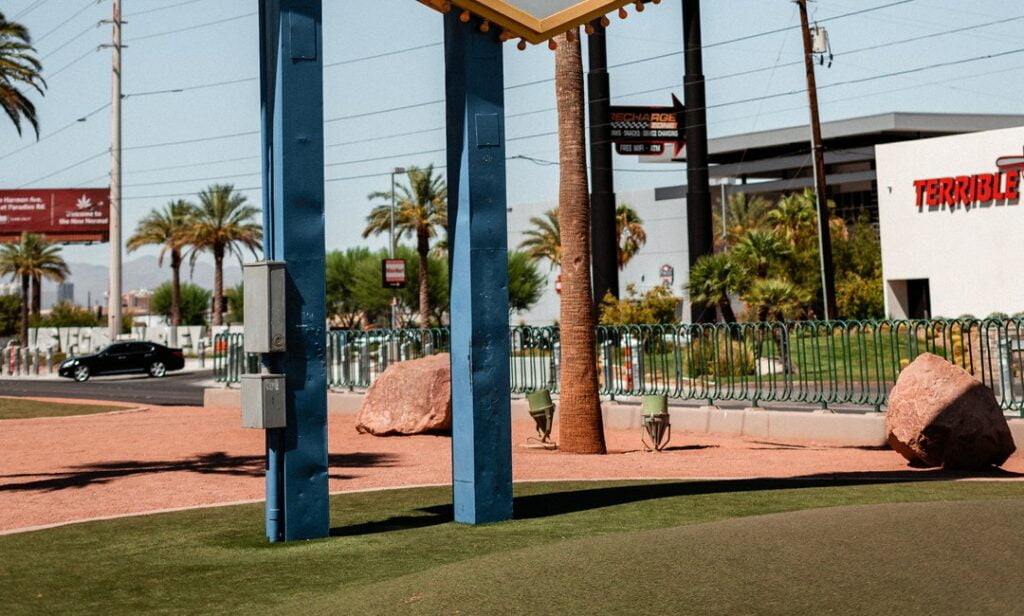The city of Las Vegas is popularly known for its enticing nightlife, casinos, and endless fun. People tend to participate in a lot of activities they typically would not engage in previously. This is what led to the popular statement, “What happens in Vegas stays in Vegas” but have you ever wondered who started Las Vegas?
Las Vegas is the most populated city in the state of Nevada. It is also the county seat of Clark County. It is a city around the Mojave Desert that has gradually evolved over the years. The City of Las Vegas has many popular nicknames like the City of Second Chances, Silver City, Sin City, and the City of Light. The nicknames came as a result of the activities that go on in Las Vegas.

Once in a while, the question, “who started Las Vegas?” comes up. This being a town founded in an area so constrained by natural setups but managed to be a haven for entertainment seekers. When looking back at the origin of Vegas, one will meet with three important eras.
There was the pre-1905 era, 1905-1931, and post-1940s. First, the pre-1905 era could be considered that of the Mexicans and the Native Americans, then the 1905-1940s era was that of the Railroad Corporation and the Prohibition. Finally, the post-1940s was the era of Entertainment.
Pre-1905 Era: The Mexicans and Native Americans
Rafael Riverawas the first non-Native American to discover Las Vegas. He did so in 1829. Before Rafael even found Las Vegas, ten thousand years ago, Nomadic Paleo-Indians had already made the journey there. The tribes from Anasazi and Paiute made this same journey about eight thousand years after.
The Spanish entrepreneur Antonio Armijo also came to LA, California, in the same year Rafael discovered Las Vegas. The topography of the town led to its naming as Las Vegas. In Spanish, Las Vegas means “the meadow.” This could also mean wild grasses and desert spring waters.
Meanwhile, the elite citizens will not begin to arrive till after 1844. When John Fremont arrived in Las Vegas, he started to write articles. These articles would later go on to evolve the impression people had about Las Vegas. Immediately when John Fremont arrived and began writings that developed the view of Las Vegas by the outside world. His writings had so much impact that there is a street in Las Vegas named after him.
1905-1940s Era: The Railroad Corporation and the Prohibition Era
Las Vegas, we know now, started later. It was created on 15th May 1905. The Union Pacific Railroad began in 1905. William Clark owned it. Downtown Vegas became famous when they started selling the lands that were near the rail tracks. The number of lands sold was about one hundred and ten acres. The unification of Las Vegas happened in 1911. Several factors played essential roles in the development of Las Vegas.

Construction of Boulder Dam
One of the significant factors that helped to develop Las Vegas was constructing the Boulder Dam. The River of Colorado housed the Boulder dam. The dam was later renamed “Hoover Dam.” The construction occurred during the Great Depression that happened in the 1930s. The development led to a significant rise in the number of workers in the city to the rate of thousands.
The Coming of the Casinos and US Army
Secondly, the state of Nevada welcomed casinos as an acceptable means to gamble. Clark County, for the first time, issued a three-month legal license to a club in 1931. The legal permit brought about the uprise of what was known as “The Strip.” It was a dusty three-mile road. Other notable enablers include the Flamingo resort.
The Arrival of Resorts
El Rancho Vegas was the first strip resort in Las Vegas. This resort marked the beginning of several other resorts opening up in Vegas. The oldest resort (Flamingo), an establishment by Bugsy Siegel, which he created with mob money, became open to the public on December 31, 1946.
Also, due to its location just outside Clark County, Vegas had for some time no speed limit. There was also a point at which Vegas had no tax. Marriage requests got granted immediately, and they also reduced the divorce wait period to 6 weeks. There was also no state income tax. All these ensured Las Vegas attained true prosperity.

Post-1940s: The Entertainment Era
The point at which gambling became legalized in Vegas was a different era. During this period, other bodies provided external funding for the casinos. The first group to lend the casinos funds was the Bank of Las Vegas. Soon Allen Dorfman made sure they (Bank of Las Vegas) soon followed the trade Union (Teamsters) led by Allen Dorfman. Teamsters were not far off in financial aid to casino owners and developers.
Hollywood Inclusion
Growth continued even with public awareness of the dubious history of the casino owners. By the mid-1950s, the casinos were making close to 300 million dollars yearly. It was not going to take long for the entertainment industry to take notice. Soon the creme de la creme of the industry came in. The likes of Frank Sinatra, Crosby, Munroe, and others began choice performances and appearances. Not long after watching the performances, the tourists would then return to gambling. Afterward, they would dine and wine.
The Atomic City
The early part of 1951 was when an atomic bomb was to be detonated in Las Vegas. The Atomic Energy Commission was the one that carried out the act. It might seem unrelated, but this act helped to improve the economy of the city. Tourists got interested in watching the nuclear bomb detonation. They even served cocktails in the skyscrapers to witness the event. At this point, Las Vegas gained the nickname Atomic City.
Modern Day Vegas
Here specific names and events will lay claim to reforms. They can also claim to be behind the transformation of what Las Vegas is today. There are people like Howard Hughes, Steve Wynn who impacted modern-day Las Vegas. Las Vegas still feels their deeds as we know them today.
Howard Hughes: Corporate Shift
The year 1966, in the history of Las Vegas, brought changes to the city. Indeed, Hughes’s presence changed the Las Vegas narrative. The town became a reputable Las Vegas, different from the past of being known for criminal activities. Hughes had a lasting network connection, and he became a mainstay in Vegas. Indeed, a mere lodger did disturb the topography of Las Vegas in a good way. He spent well over $300 million on its real estate. Hughes’s investment brought in an era where legitimate companies displaced mob interests. He made sure he bought several of the high-end casinos and hotels from the mob owners.
Steve Wynn: The Mega Resorts
Steve Wynn was a prominent casino developer. Likewise, in 1989 he opened a mega-resort that was the first of its kind in Vegas. The resort had large-scale structures. They included casinos, theme parks, hotels, golf courses, and varying accommodations. The size of the alternatives is usually exceptional. Consequently, these mega-resorts started the trend of old casinos evolving into modern resorts.
Hank was the editor at the Las Vegas Sun. He worked with a team and led a series of investigative reporting. He was able to expose a lot of shameful and criminal acts that went down in Vegas.
The Local Government and Desegregation
There was an attempt by Las Vegas to annex the strip. But this attempt failed when the syndicate pulled a legal undercard, bringing together all strip properties. They put them under an unincorporated township. There was a law in Nevada that did not allow incorporated towns to annex unincorporated ones.
Las Vegas also had its share in the battle for civil rights. During this period, there was lots of segregation of people based on their race. Racism was still the order of the day and it took a lot of effort to change people’s mindset. A lot of activists like Bob Bailey moved Las Vegas to the point of racial integration. Also, Mayor Oran Grayson fought to stop the eviction of the colored Americans and the Paiute tribe. These acts helped bring the Las Vegas industry back to life, and all colors could finally hold any position.
Conclusion
In the end, one can see that Las Vegas as a place has started and restarted severally. However, a different person initiated each era. Now you know the answer to the question; who started Las Vegas and a little history of how it became the magnificent city it is today.



